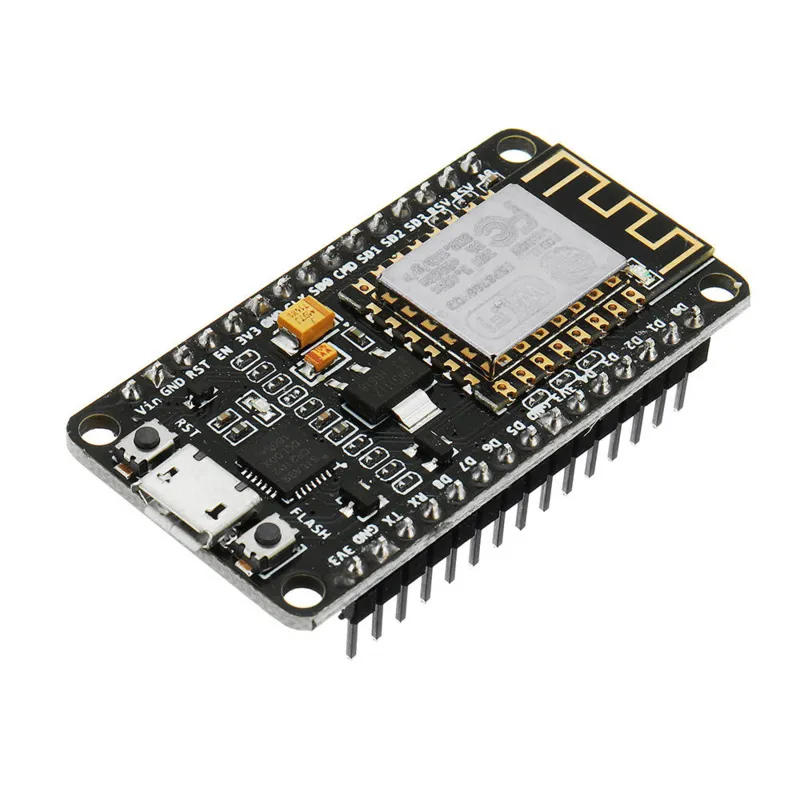ESP8266 Explained
Introduction
The ESP8266 is a highly versatile and cost-effective Wi-Fi microchip developed by Espressif Systems. Initially introduced as a serial-to-Wi-Fi bridge, this compact module has evolved into a powerful platform for Internet of Things (IoT) applications, offering integrated Wi-Fi capabilities, a robust set of features, and extensive community support. Let's delve into the various aspects of the ESP8266 to understand its capabilities, applications, and significance in the realm of embedded systems and IoT.
Key Features
-
Integrated Wi-Fi: One of the standout features of the ESP8266 is its integrated Wi-Fi capability, allowing seamless connectivity to wireless networks, enabling devices to communicate, send data, and interact with online services.
-
Microcontroller: Equipped with a Tensilica L106 32-bit microcontroller, the ESP8266 offers sufficient processing power and resources to execute complex tasks, interface with various sensors and peripherals, and manage Wi-Fi connectivity efficiently.
-
GPIO Pins: The ESP8266 features a versatile array of General-Purpose Input/Output (GPIO) pins, facilitating connectivity with external components, sensors, actuators, and other devices, enabling a wide range of applications and configurations.
-
Low Power Consumption: Designed for energy efficiency, the ESP8266 optimizes power consumption without compromising performance, making it suitable for battery-powered applications and energy-conscious designs.
-
Flexible Firmware: The ESP8266 supports a variety of firmware options, including the NodeMCU, Arduino IDE, and Espressif's native SDK, providing developers with the flexibility to choose the most suitable development environment based on their requirements and expertise.
Applications
-
Home Automation: Leveraging its Wi-Fi capabilities and GPIO pins, the ESP8266 is widely used in home automation systems to control lights, appliances, security systems, and HVAC systems remotely, offering enhanced convenience, efficiency, and security.
-
IoT Devices: As a cornerstone of the IoT ecosystem, the ESP8266 powers a myriad of connected devices, including smart thermostats, environmental monitors, wearable devices, and industrial sensors, enabling seamless data collection, analysis, and communication.
-
DIY Projects: Due to its affordability, versatility, and community support, the ESP8266 is a popular choice among hobbyists, makers, and DIY enthusiasts for prototyping, experimenting, and developing innovative projects, ranging from robotics to multimedia devices.
-
Industrial Applications: With its robustness, scalability, and connectivity features, the ESP8266 finds applications in industrial automation, monitoring systems, logistics, and supply chain management, enabling real-time data acquisition, analytics, and control.
Community and Ecosystem
The ESP8266 community is vibrant and diverse, encompassing developers, enthusiasts, educators, and professionals passionate about embedded systems, IoT, and innovation. This thriving ecosystem fosters collaboration, knowledge sharing, and the development of open-source projects, libraries, tutorials, and resources, empowering individuals and organizations to leverage the full potential of the ESP8266 platform.
Conclusion
In summary, the ESP8266 is a groundbreaking Wi-Fi microchip that has revolutionized the embedded systems landscape, IoT applications, and DIY electronics projects. With its integrated Wi-Fi capabilities, powerful microcontroller, versatile GPIO pins, low power consumption, and extensive community support, the ESP8266 offers a compelling platform for innovation, experimentation, and development across various domains. Whether you're a seasoned developer, a hobbyist, or an industry professional, the ESP8266 provides a robust, affordable, and versatile solution for realizing your creative visions, powering the next generation of connected devices, and shaping the future of IoT.
